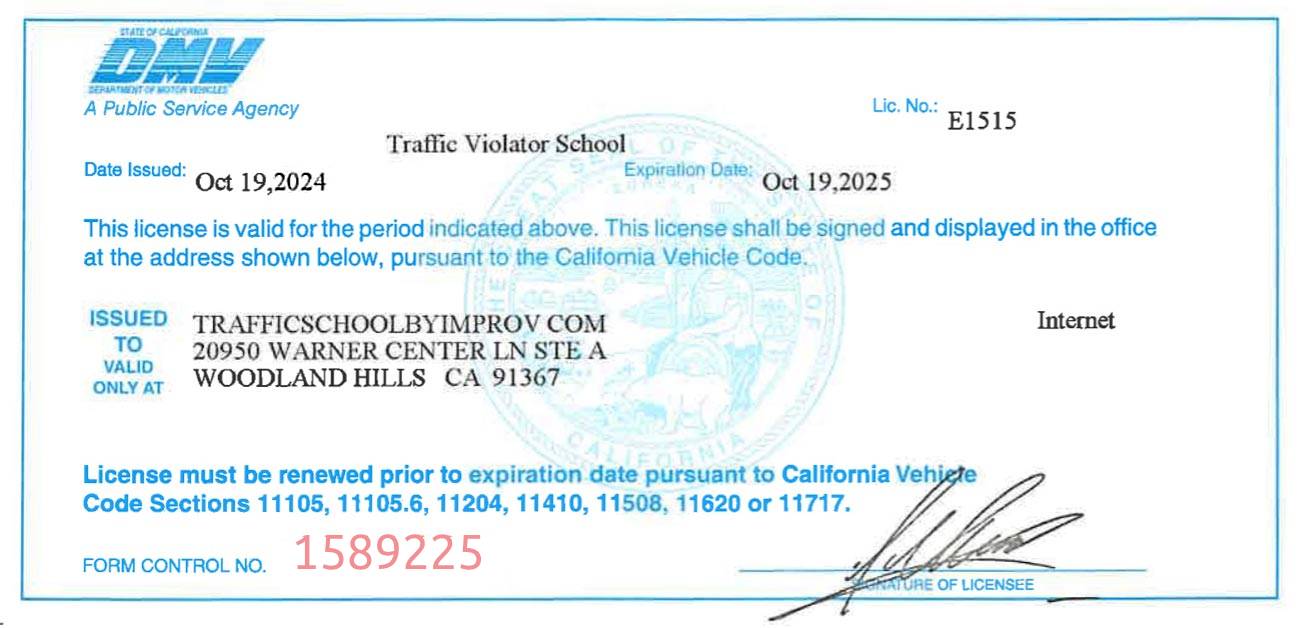SAVE 27%
California Traffic School
9 out of 10 Drivers Prefer IMPROV
-
Only $36.95 $24.95
-
Super easy multiple-choice quiz
-
Certificate in 30 minutes
-
No chapter timers
-
Automatic report to Court/DMV
-
All-inclusive flat fee
-
7 day/Week Support via Phone, Chat, SMS
-
Office hours: Monday - Friday 9:00 a.m. - 4:00 p.m. PST
-
4 FREE VIP tickets to the IMPROV Comedy Club - $59 Value
it or your money back
 Live Chat
Live Chat


 (200K+)
(200K+)
 TRAFFICSCHOOLBYIMPROV.COM CA DMV Lic. E1515
TRAFFICSCHOOLBYIMPROV.COM CA DMV Lic. E1515









